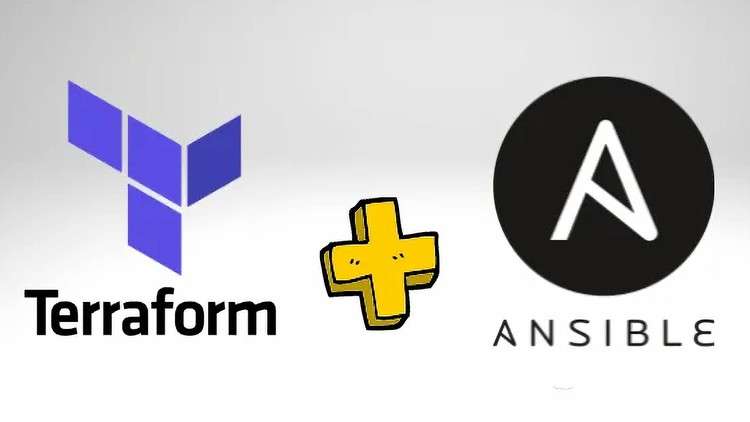Course Introduction
Course Introduction
Understanding Infrastructure As Code
IAC and IAC Benefits
Cloud Agnostic IAC with Terraform
Understanding Infrastructure As Code
Procedure Document and Resource Location
IaC with Terraform
Terraform Workflow
Terraform Initialization
Terraform key Concepts : Plan, apply & Destroy
SetUp Free-Tier AWS Account (Optional)
Create Cloud Machine for Terraform Execution
$200 Discount Gift on Digital Ocean
Terraform Installation & Verification
Install Terraform on MacOS / Windows
IaC with Terraform
Start With Terraform Basics
Terraform Provider & Initialization
AWS SetUp for Terraform
Create Machine Using Terraform
Provide Creds in Separate Centralised File
Provide Creds in Environment Variables
Create Multiple Instances
Terraform State : The Concept
Terraform Variables Detailed Explanation
Variables in Terraform
Use of Variable in Conf File
Lab : Use of Variable in Conf File
Lab : List and Map Variables
Terraform Concepts – Building Blocks
Provision Software with Terraform
Lab : Provision Software with Terraform
DataSource in Terraform
Lab : DataSource in Terraform
Lab 2 : DataSource in Terraform
Output Attribute in TF
Lab : Output Attribute in TF
Remote State in Terraform
Lab : Remote State in Terraform
Terraform for AWS Cloud
AWS VPC Introduction
AWS VPC Introduction II
Demo : AWS VPC & Security Group
Lab : Create AWS VPC & NAT Gateway
Launch EC2 Instance using Custom VPC
Lab : Launch EC2 Instance using Custom VPC
We Need You!!!
Elastic Block Store (EBS) in AWS
Demo : Elastic Block Store (EBS) in AWS
Lab : Elastic Block Store (EBS) in AWS
User Data in AWS
Lab: User Data using Script
Lab : User Data using Cloud Init
Terraform for AWS Cloud Part II
AWS RDS Basics
Lab : Create RDS
AWS Access and Identity Management
Lab : IAM Users and Groups
Lab : AWS IAM Roles
EC2 Instance Autoscaling
Lab : EC2 Instance Autoscaling
Your Reviews are Important!
Load Balancing in AWS
Lab : AWS Load Balancing
Terraform Modules | Code Re-Useability
Terraform Module and Application
Lab : Terraform Source From GITHUB
Lab : Local Path Module
Lab : AWS VPC Module Part I
Lab : AWS VPC Module Part II
Lab : AWS VPC Module Part III
Conditions , Loops in Terraform
Condition Statements in Terraform
Lab : Condition Statements in Terraform
Terraform Built-In Functions
Lab : Terraform Built-In Functions
Loops in TerraFrom HCL
Terraform Project Structure
Lab : Terraform Project Structure
Packer and Terraform
Packer Introduction and It’s Use
Install Packer
Lab : Create Custom AMI Scenario I
Lab : Create Custom AMI Scenario II
Lab : Terraform + Packer
Job Scenario 1 : End to End Web-Application Deployment
Application Overview
Create VPC Network
Create RDS Service
Create WebServer in AWS
Deploy Complete Application
Job Scenario 2 : Terraform Docker and Kubernetes (EKS)
AWS EKS Introduction
Lab : SetUp EKS Cluster Using AWS
Lab : SetUp EKS Using AWS CLI
Lab : Access EKS Cluster and Deploy Application
Text Direction : SetUp EKS using AWS CLI
EKS Cluster TerraForm Configuration files
Lab : Deploy EKS Cluster using Terraform
Job Scenario 3 : Terraform & AWS ELK
ELK Basics and Application
Lab : Deploy ELK and Execute ELK
Text Direction : Lab – Deploy ELK and Execute ELK
Lab : Install ELK using Terraform
Terraform GCP : Introduction
Terraform vs Google Deployment Manager
Setup GCP Project For Terraform
Enable Basic APIs on Cloud Project
Setup Remote State File in Cloud
Terraform Hashicorp Certification Guide
Introduction HashiCorp Certification
Understand Infrastructure as Code (IaC) Concepts
Understand Terraform’s Purpose
Understand Terraform Basics I
Understand Terraform Basics II
Use the Terraform CLI
Interact with Terraform modules
Navigate Terraform workflow
Implement and Maintain State
Read, Generate, and Modify Configuration
Understand Terraform Cloud and Enterprise Capabilities
Ansible Introduction
Ansible Introduction : As a Tool
Ansible : Used Code Files Location
Ansible Architecture Overview
Why Ansible
Ansible Environment Preparation & Installation
Ansible Installation Overview
Install Ansible Using PIP
Create Cloud Machine for Ansible Engine
Install Ansible Using Python VirtualEnv
Run Instructions : Install Ansible Using Python VirtualEnv
Configure Ansible
Configure Ansible Engine and Ansible Clients
SetUp AWS Nodes
Connect AWS Nodes with Ansible Engine
SetUp Google Cloud Nodes
Connect Google Cloud Nodes with Ansible Engine
Ansible Directory Config
Inventory file with Groups
Ansible Ad-Hoc Commands
Syntax of Ansible Ad-Hoc Commands
How Ansible Execute Stuff on Clients
Transfer file from Engine to Clients
Manage File/Directory on Ansible Clients
Install Packages on Ansible Clients
Ansible Facts, Modules & Variables
Ansible Modules
Ansible Facts
Create Custom Facts
Ansible Inventories
Work with Dynamic Inventory Script AWS I
Work with Dynamic Inventory Script AWS II
Work with Dynamic Inventory Script Google Cloud
Basic of Ansible Playbook
Playbook Introduction
Demo: Playbook Introduction
Start Writing-Executing PlayBooks
Basic Concepts of Ansible PlayBooks
Logging Debug Statement using Ansible Playbooks
Variables in Ansible Play-books
Data Collection in Ansible
Uses of Set_Fact and Register
Arithmetic Operations on Variables in Playbook
Practice on Arithmetic Operators
Filter and Methods of Ansible Playbook
Operators and Conditional Statement in Ansible Playbook
Comparison Operators
Membership Operators in Ansible
Logical Operator
Conditional Statements
Handlers in Ansible
Handler in Ansible Playbook
Loops in Ansible Playbook
Loops in Ansible Playbook I
Loops in Ansible Playbook II
Loops in Ansible Playbook III
Tags in Ansible
Tags in Ansible
Error Handling in Ansible
Error Handling in Ansible I
Block and Rescue in Ansible Playbook
Demo: Block and Rescue in Ansible
Working with include and import module in Ansible
Working with include and import module in Ansible
Ansible Machine Specific Execution
Ansible local_action Module
Ansible Delegate_to Module
Concept of Template in Ansible
Install Realtime Application I
Install Realtime Application II
Install Realtime Application III
Template Module with Variables
